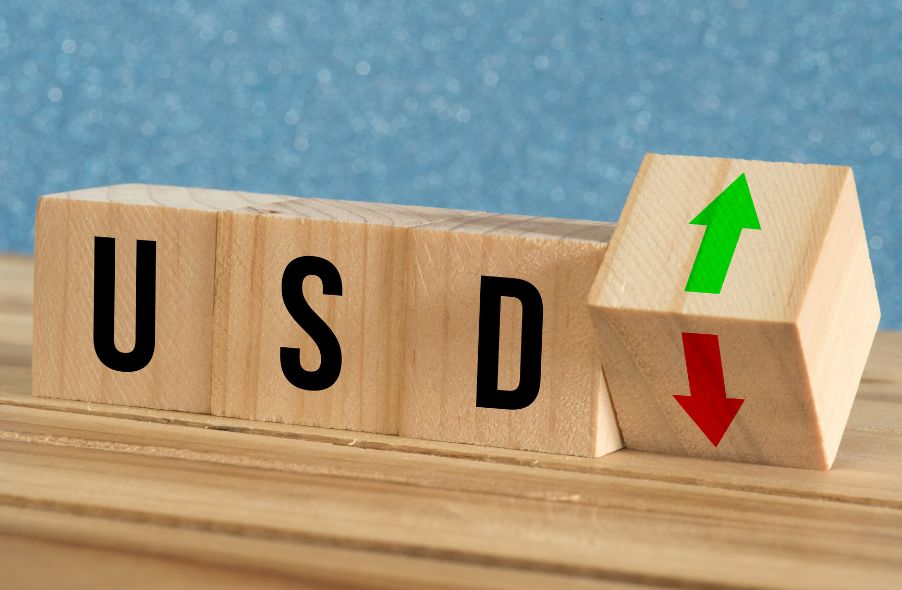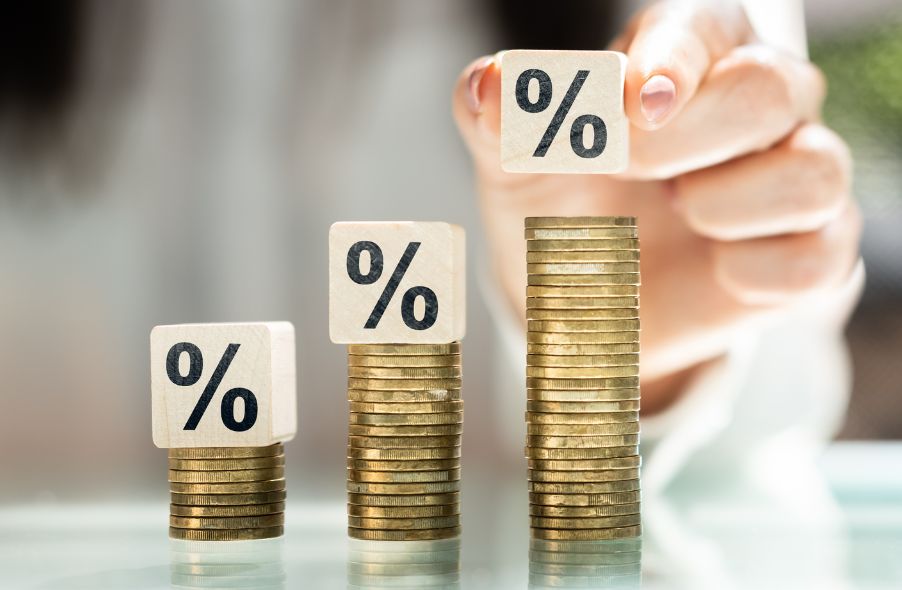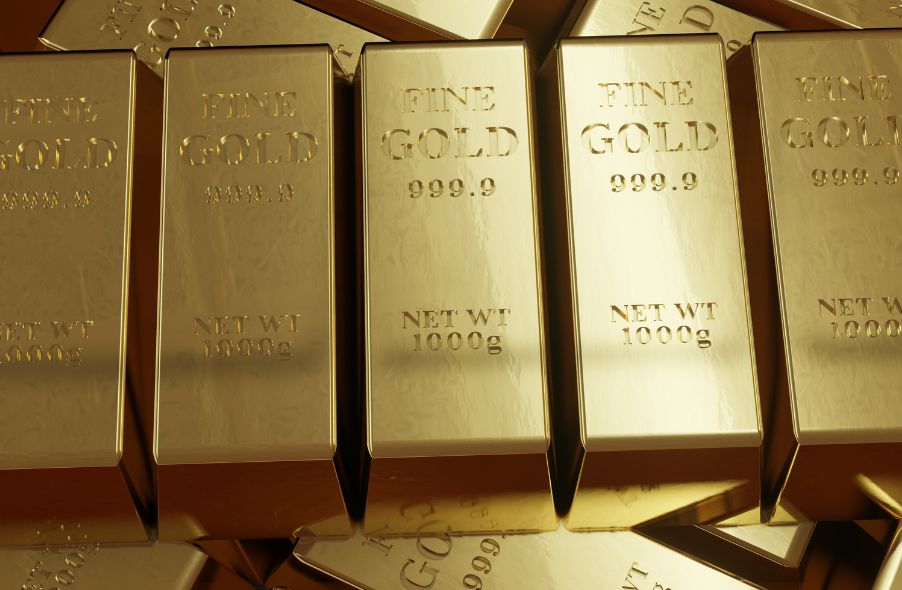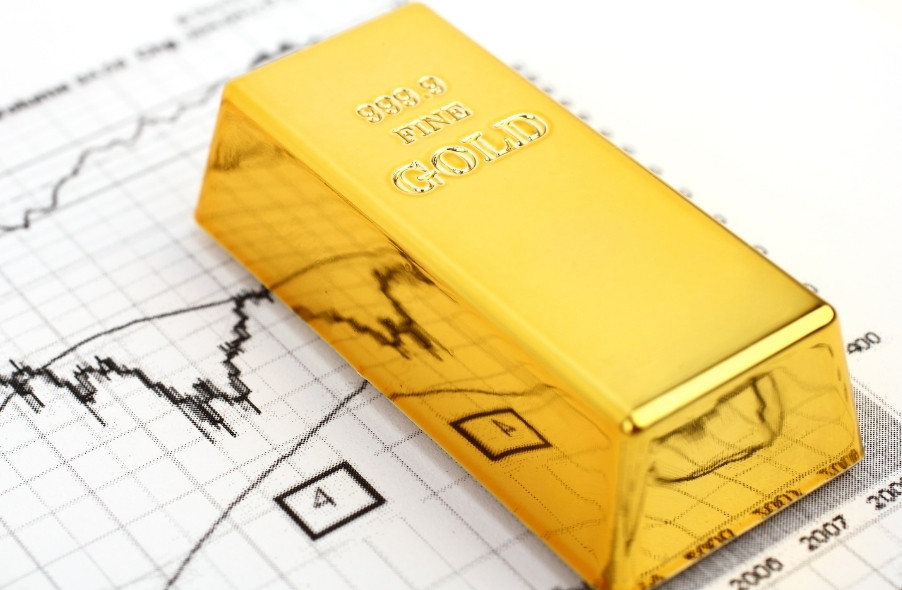Few precious metals have captured the world’s attention quite like gold has. Wars have been fought over this pale yellow metal for thousands of years. Today, it’s used in everything from cell phones to dental fillings.
Gold is a popular pick for many investors, too. It’s always in demand, which means it doesn’t tend to lose value like some other assets do. That doesn’t mean the price always remains stable, though.
Curious about what affects gold prices? Find out below.
What Is the Historical Performance of Gold as an Investment?
It’s the age-old question of many investors: Is gold a good investment for the future?
Gold is indeed highly sought-after, but that fact by itself doesn’t necessarily make it the perfect investment. That’s because the price of gold can shift with economic changes and the value of the U.S. dollar, so investors can never truly be sure which way the wind will blow.
Gold also doesn’t generate income for investors like other types of assets, such as stocks and bonds. Its true value is to serve as a hedge against inflation. Many investors like to buy gold when they think the stock market is going to take a hit.
Gold reached its all-time high value of $2,075 in 2020, just as the COVID-19 pandemic began to spread. The price has since settled at about $1,884.
Historically, stocks have outperformed gold as an investment. From 1990 to 2020, the Dow Jones Industrial Average (DJIA) jumped by more than 900%, but the price of gold only rose by about 360% in the same time period.
However, there have been times when gold has outperformed stocks and bonds. This typically happens during periods of increased inflation and geopolitical uncertainty.
What Factors Affect the Price of Gold?

So, what affects gold prices? Like all other precious metals, the price of gold shifts in response to a variety of factors. Some of these include:
- Supply and demand for gold
- Increasing demand from manufacturers of electronics, dental supplies, and medical equipment
- Inflation
- Interest rates
- Currency exchange
- Changes in gold reserves
- Geopolitical conflicts
Supply and Demand Factors
The concept of supply and demand is fairly simple. The less of something there is, the more people will pay to buy it. This concept applies to gold prices, too.
How Does Gold Production Impact Its Price?
Gold is formed deep below the earth’s crust, where it slowly makes its way to the surface via earthquakes, volcanic eruptions, and flowing water. Note the word “slowly.” It could take thousands of years for a buried chunk of gold to see the light of day.
If you know anything about the Wild West, you may recall stories of pioneers panning for gold in creeks and riverbeds. The gold strike at Sutter’s Hill near Sacramento, California, is one such example. This gold rush started in 1848, and by the following year, about 80,000 fortune seekers had made their way to California’s gold fields. Other large gold rushes happened in Australia, South Africa, and a few other states across America.
Most of that gold has since been claimed, and today, miners must journey deep into the earth to collect the mineral.
The more miners collect gold, the less of it is available to find, which means they must steadily make their way deeper and deeper underground. It takes longer to locate gold, and doing so becomes an expensive and risky endeavor for the miners.
However, the demand for gold remains as high as ever. Due to the increased cost of mining gold, prices may continue to rise.
What Role Does Industrial and Technological Demand Play in Gold Prices?

It may surprise you to know that gold isn’t just a pretty metal used in jewelry. Of course, this is a popular use for gold because it’s easy to work with and boasts good tarnish resistance, but not all gold ends up in someone’s necklace or wedding ring.
Gold is a very efficient conductor, which means it’s frequently used in computers and electronics. Nearly every electronic gadget you own has at least a tiny amount of gold in it, and that includes your phone, the GPS in your car, and even your TV.
Gold is non-allergenic and chemically inert, which means it’s often used in dentistry. If you’ve ever had a filling at the dentist’s office, there’s a chance it used gold. Gold may even have been used to fill cavities in ancient times.
Electronic medical equipment, life-support devices, and some surgical tools contain gold as well. Other uses for gold in medical settings include:
- Correcting a condition called lagophthalmos, which prevents a person’s eyes from closing all the way
- Implanting it in the tissues of cancer patients as a source of radiation
- Treating rheumatoid arthritis
Gold is also used in aerospace applications. It’s found in satellites, spacecraft, and telescope mirrors. It provides excellent lubrication and prevents spacecraft from overheating.
If you’ve ever seen a building with ruby-tinted windows, you may have spotted gold in action. Glass makers can add a small amount of gold to window panels to help reflect radiation, which allows buildings to stay cool in the summer and retain heat during the winter.
With so many uses for gold, it’s easy to see how the demand for this precious metal can affect prices.
Economic Factors

What affects gold prices? Economic factors heavily impact them. These factors can include wage data, manufacturing data, job reports, and economic uncertainty. Factors such as these have a big influence on the Federal Reserve’s monetary policy decisions, which also affect gold prices.
How Does Inflation Impact the Price of Gold?
Inflation may seem like a bad thing for consumers, who must often deal with ever-rising prices for rent, groceries, gas, and other necessities. However, inflation is typically a sign of robust economic growth. During these times, the Federal Reserve expands the money supply, which dilutes the value of money that’s already in circulation.
In turn, it becomes more expensive to purchase assets — including gold.
Interest Rates
Rising interest rates can leave a bad taste in the mouths of consumers, especially those who are looking to buy a home or refinance their current property. However, it’s good news for people who own CDs (certificates of deposit) and high-interest savings accounts, as the higher the interest rate goes, the more money they will earn.
But what about people who have invested in gold? Do rising interest rates benefit them?
Generally, no. That’s because interest rates and gold have a sort of inverse relationship. Often, when interest rates rise, the price of gold drops (and vice-versa).
However, people who have been thinking about investing in gold but haven’t yet taken the plunge can come out ahead. They may choose to buy gold when interest rates are fairly high, then sell when they drop again.
Currency Exchange
Did you know that the price of gold is based on the strength of the U.S. dollar? Not only that, but the value of currencies around the world can shift along with the dollar’s value, too.
As you might expect, this has a heavy impact on the price of gold. Typically, when the value of the U.S. dollar falls, gold prices rise.
Gold Reserves

Chances are good that you’ve heard of Fort Knox and the tons of glittering gold bars stored within. That stockpile is part of the gold reserves.
Gold reserves include the gold held by a national central bank. The bank uses this gold to support the value of national currency or as a guarantee to redeem promises to pay noteholders, depositors, or trading peers.
Changes in National Gold Reserves
Why would a bank ever want to lower the amount of gold it holds? This can happen when the economy is doing well, and foreign exchange reserves are large. During these times, the gold isn’t generating a return, so banks prefer to offload it if they can.
Most investors aren’t very interested in buying gold at such times, though. So when a bank tries to sell gold, the price of it will fall.
To avoid disrupting the market too much, banks will generally agree not to sell over a certain amount of gold per year. According to the Washington Agreement, for instance, banks should not sell more than 400 metric tons of gold annually.
Gold Leasing and Lending
You’ve heard of leasing a car, but what about leasing and lending gold? You wouldn’t expect investors to lend or borrow gold, but that’s exactly what some of them do.
Suppose a gold mining company expects to have 500 ounces of gold when it’s done with production, but that gold won’t be ready to sell for another month because the company needs to refine it first. However, it needs to cover its expenses and pay employees before then.
To solve the problem, the mining company might borrow gold from a bullion bank and then sell the gold to cover its costs. Then, once it has finished refining its own mined gold, it will give that gold back to the bank.
Some analysts believe that banks lease gold as a way to manipulate gold prices, but that isn’t true. This is because the demand for borrowing gold actually goes up when the price of gold declines.
Leasing gold was once profitable, but that’s no longer the case. The demand for gold borrowing dropped in the 2000s, and as a result, lease rates for gold fell close to zero.
Does Jewelry Significantly Impact Gold Prices?

Who can resist the allure of a shiny gold ring, necklace, or bracelet? Jewelers know this, which is why they can get away with charging hundreds (sometimes thousands) for a simple piece of jewelry.
Many investors think that jewelry can significantly impact the price of gold. After all, it’s very easy to buy. Anyone can walk into a jewelry store and purchase a ring or two. That said, while it’s true that rising demand for jewelry could boost gold prices, more often than not, when gold prices rise, the demand for jewelry falls.
Jewelry also isn’t a good indicator of gold price trends because most people tend to hold onto their jewelry for a long time. Think of a wedding band, which someone might wear for 50+ years, or a gold necklace that becomes a family heirloom tucked safely away in the attic.
How Do Gold EFTs Affect Gold Prices?
EFTs are basket funds that allow investors to spread risks over a large number of assets with minimal costs.
The SPDR Gold Trust is one such example. This ETF sells and buys physical bullion based on demand from investors. As of October 2023, the ETF holds more than 862 tons of gold.
It’s also worth noting that some ETFs allow investors to hold shares of mining companies instead of actual gold.
As you might expect, the more people invest in gold ETFs, the higher the price of gold tends to rise.
Environmental Factors

Although the demand for gold remains high, there is a growing awareness of just how much damage gold mining can do to the environment. Gold mining involves the use of chemicals and heavy equipment, which can cause devastating soil erosion and even pollute our waterways.
Abandoned mines, in particular, are the cause of many environmental disasters. For instance, the Gold King mine in Colorado once produced about 700,000 tons of gold and silver from 1887 to 1922. When the mine was finally abandoned, metal-laden sediments made their way into nearby streams and creeks.
About 100 years after the mine’s closure, an EPA investigation accidentally released three million gallons of contaminated water into a creek. This spill contaminated farm irrigation water and rivers across three states, as well as the Navajo Nation. In the end, the federal government paid $63 million in settlements to the Navajo Nation and New Mexico to address the harm caused to their communities.
How Do Environmental Regulations Affect the Gold Industry?
Because of disasters like these, the federal government has put protections in place to help mitigate the impact of metal mines. Some of these include:
- National Environmental Policy Act (NEPA), passed in 1969, which defines processes for permitting new mining on federal lands
- Clean Air Act (CAA), passed in 1970, which authorized regulations to address airborne pollution that could be harmful to humans and wildlife
- Resource Conservation and Recovery Act (RCRA), passed in 1976, which aims to prevent the release of hazardous waste into the environment
- Toxic Substances Control Act (TSCA), passed in 1977, which regulates materials used in the processing of ores
- Clean Water Act (CWA), passed in 1977, which authorizes regulations that cover the discharge of pollutants into waterways
- Comprehensive Environmental Response, Compensation, and Liability Act (CERCLA), also called “Superfund,” passed in 1980. This regulation allows the government to clean up any site where there’s an unremedied release of a hazardous substance.
These regulations may be good for the environment, but they can have a hefty impact on gold mining companies. For example, mining companies may be unable to dig in certain areas because of laws against it. If they were allowed to dig at those sites, the supply of gold would increase, and it’s possible that prices would drop in response.
How Do Geopolitical Conflicts Impact the Price of Gold?
Geopolitical conflicts, such as the ongoing war between Russia and Ukraine, seem to be at an all-time high. But do these conflicts have any impact on the price of gold?
It’s certainly possible. Some investors like to buy gold as a way to protect their money during shaky times. When the Russia-Ukraine conflict broke out, for instance, gold jumped by 6% in the first quarter of 2022.
Many investors also purchase gold before a crisis happens and then offload their precious metals when an event actually occurs. They might buy gold when the news suggests rising tensions overseas, for example.
However, gold prices are strongly linked to the U.S. economy. That means international conflicts may not affect those prices as much as initially thought.
Do Gold Investments Affect Gold Prices?
As mentioned above, ETFs can have an impact on gold prices. Gold ETFs allow investors to put money in the precious metals market without having to invest in physical bullion.
Gold ETFs can sound appealing to those without much money, but they’re not without risks. Gold itself doesn’t produce income, so the ETF manager is allowed to sell gold to pay for their expenses. This slashes the underlying assets per share, which can cause discrepancies in the listed value of the ETF and the actual value of the underlying gold asset.
Now that you know what affects gold prices, reach out to us to find the right gold IRA partner for you. At Learn About Gold, we can help you understand the benefits of investing in a gold IRA, explain which country has the purest gold, and answer other questions. Our aim is to help our clients navigate gold investing and understand how to benefit from this precious metal. Talk to us to learn more.





